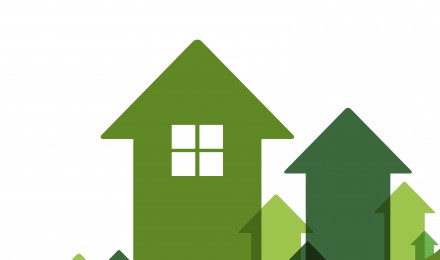The shortage of existing homes may be reflected in the sales of new U.S. homes as the indicator rose to its highest annualized level in five years, according to the Commerce Department. In June, new home purchases increased 8.3 percent—a 497,000 unit pace. The pace is 8.3 percent above May revised rate of 459,000 down from an original projection of 476,000 units.
New homes sales for June climbed 38.1 percent above the June 2012 estimate of 360,000— and the biggest year-over-year increase since January 1992. The Bloomberg survey of 77 economists returned a consensus forecast of 484,000 homes. Estimates range from 415,000 to 518,000.
New homes median sales price rose 7.4 percent in June, to $249,700 from $232,600 last year.
In June, the supply of new homes dropped to the lowest level seen since 2004 to 161,000 units– a 3.9 month supply compared to 4.2 months in May. It’s also the same inventory level touched in January.
Good news for economy
Many economists attribute the surprising sales gain to the desire of home buyers to avail themselves of reasonable home mortgage rates, which remain relatively low from a historical perspective even with recent increases. Last week, the benchmark 30-year fixed-rate mortgage averaged 4.37 percent, reports Freddie Mac versus a record low of 3.31 percent in November 2012.
In addition, an improved labor market has motivated more potential buyers to get off the fence and satisfy the pent-up demand they’ve held in check since the end of the recession and through the subsequent lack-luster economy.
Stuart Hoffman, the chief economist at PNC Financial Services Group (Pittsburgh), expected sales to reach a 500,000 pace. Hoffman categorize the current environment as a “builder’s market”. “The housing market is poised for further gains and is a key component of the U.S. recovery overall,” remarked Hoffman.
Low existing homes inventory
The prevailing shortage of existing homes has increased foot traffic. The National Association of Realtors (NAR) report that the sales of previously owned home dipped 1.2 percent in June, to an annualized rate of 5.08 million homes. Nonetheless, the NAR reports that the Junes sales figure rates as the second-strongest month for sales transactions since November 2009.
The inventory shortage continues to put upward pressure on existing homes prices—as the median price rose 13.5 percent to 13.5 percent to $214,200. In June 2012, the median price was $188,800.
Builder’s more confident
Early this month, the National Association of Home Builders/Wells Fargo index reached its highest number in seven years. With a 13 point gain over the last two months, builder sentiment has recorded it biggest back-to-back increase since January-February 1992.
The improved new home sales market has a “trickled down” effect in other industries. The CEO of appliance manufacturer Whirlpool Corp. revealed in an earnings call that the “demand assumption” for the industry had been revised up to 8 percent from the initial projection of 6 percent.
New home sales, which made up 7 percent of the residential housing market last year, are calculated based on the number of signed contracts. Economists consider the metric to be a timelier gauge of the housing market than existing home sales data, which are tabulated based on final sales.
The shortage of existing homes may be reflected in the sales of new U.S. homes as the indicator rose to its highest annualized level in five years, according to the Commerce Department. In June, new home purchases increased 8.3 percent—a 497,000 unit pace. The pace is 8.3 percent above May revised rate of 459,000 down from an original projection of 476,000 units.
New homes sales for June climbed 38.1 percent above the June 2012 estimate of 360,000— and the biggest year-over-year increase since January 1992. The Bloomberg survey of 77 economists returned a consensus forecast of 484,000 homes. Estimates range from 415,000 to 518,000.
New homes median sales price rose 7.4 percent in June, to $249,700 from $232,600 last year.
In June, the supply of new homes dropped to the lowest level seen since 2004 to 161,000 units– a 3.9 month supply compared to 4.2 months in May. It’s also the same inventory level touched in January.
Good news for economy
Many economists attribute the surprising sales gain to the desire of home buyers to avail themselves of reasonable home mortgage rates, which remain relatively low from a historical perspective even with recent increases. Last week, the benchmark 30-year fixed-rate mortgage averaged 4.37 percent, reports Freddie Mac versus a record low of 3.31 percent in November 2012.
In addition, an improved labor market has motivated more potential buyers to get off the fence and satisfy the pent-up demand they’ve held in check since the end of the recession and through the subsequent lack-luster economy.
Stuart Hoffman, the chief economist at PNC Financial Services Group (Pittsburgh), expected sales to reach a 500,000 pace. Hoffman categorize the current environment as a “builder’s market”. “The housing market is poised for further gains and is a key component of the U.S. recovery overall,” remarked Hoffman.
Low existing homes inventory
The prevailing shortage of existing homes has increased foot traffic. The National Association of Realtors (NAR) report that the sales of previously owned home dipped 1.2 percent in June, to an annualized rate of 5.08 million homes. Nonetheless, the NAR reports that the Junes sales figure rates as the second-strongest month for sales transactions since November 2009.
The inventory shortage continues to put upward pressure on existing homes prices—as the median price rose 13.5 percent to 13.5 percent to $214,200. In June 2012, the median price was $188,800.
Builder’s more confident
Early this month, the National Association of Home Builders/Wells Fargo index reached its highest number in seven years. With a 13 point gain over the last two months, builder sentiment has recorded it biggest back-to-back increase since January-February 1992.
The improved new home sales market has a “trickled down” effect in other industries. The CEO of appliance manufacturer Whirlpool Corp. revealed in an earnings call that the “demand assumption” for the industry had been revised up to 8 percent from the initial projection of 6 percent.
New home sales, which made up 7 percent of the residential housing market last year, are calculated based on the number of signed contracts. Economists consider the metric to be a timelier gauge of the housing market than existing home sales data, which are tabulated based on final sales.






